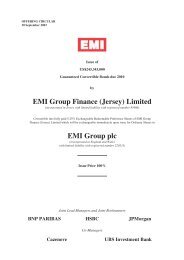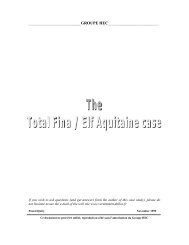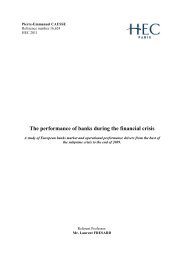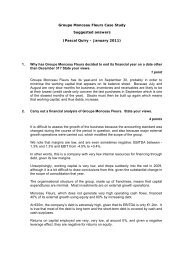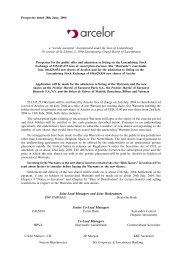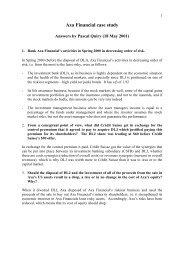Thesis_gd_final_vers.. - Vernimmen
Thesis_gd_final_vers.. - Vernimmen
Thesis_gd_final_vers.. - Vernimmen
You also want an ePaper? Increase the reach of your titles
YUMPU automatically turns print PDFs into web optimized ePapers that Google loves.
deposits in denomination higher than $100,000 only until the first quarter of 2006 included, and<br />
data on deposits higher than $250,000 since then. We are forced to use the RCON data series for<br />
our detailed split of loans secured by real estate because the RCFD data series is available only<br />
since mid-2008. We keep the RCON data series during the whole period for consistency reasons.<br />
We add to the items list (Table 3) the reporting period for each item. It shows that MBS held<br />
either in securities or in trading have stopped being reported at the bank company level after Q1<br />
2009. Moreover, our data on exposure to securitization vehicles through off-balance sheet<br />
commitments such as recourse or liquidity enhancement were reported only from Q2 2001 on.<br />
After a quick check to assess the extent of missing data in the database, we find that 383 banks<br />
have no information over the total period for the four main items extracted from the income<br />
statement. We decide to drop these banks observations from the database. We list these banks in<br />
Appendix one (Table A1). From the name of these entities and investigations on a random sample<br />
it seems clear that they are branches or subsidiaries of large foreign banks and most of them<br />
should have a status of Agreement Corporation, which allow them to engage in international<br />
banking. Consequently these banks are out of the scope of this study. We also dropped 94 banks<br />
that have missing information on our first level of loan categories for all quarters. After a check, it<br />
appears that these institutions are mostly subsidiaries conducting the international banking<br />
activities of US banks or holding companies of international subsidiaries of US banks. We provide<br />
a complete list of these banks in Appendix 1 (Table A2).<br />
b) Variables and hypotheses<br />
We construct financial variables encompassing traditional bank failure variables that have been<br />
found to be statistically and economically significant on bank failure prediction 13 . To these we add<br />
specific variables to test our hypothesis in the context of bank failures during the current crisis<br />
(Table 4). We divide the variables into the following categories: profitability, scope and business<br />
model, asset allocation and asset quality, capital adequacy and liquidity. Given that all our variables<br />
are based on accounting ratios, we want to avoid the potential effects of outliers on our results.<br />
Consequently, we winsorize all our variables at the one-percent level in both tails of their<br />
distribution.<br />
We measure bank profitability with three variables:<br />
- the ratio of net income against the total assets (NET_INC), which is an after tax return on<br />
assets. A high profitability is likely to be associated with a low failure risk. We expect failed<br />
banks to be significantly less profitable than safe ones, at least a couple of quarters before<br />
13 Cole and Wu (2009), Wheeloc and Wilson (2000), King, Nuxoll and Yeager (2006)<br />
- 28 -



